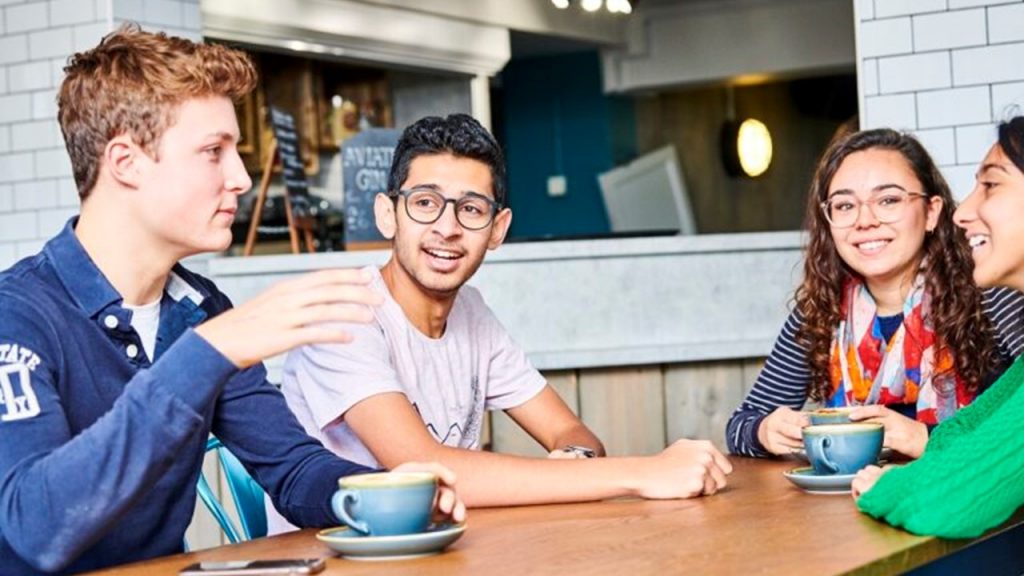Are you looking for ways to effectively teach different types of learners in the classroom? If so, you’ve come to the right place. In this blog post, we will be exploring different types of learners and how to approach teaching them in a classroom setting. We’ll discuss why it is important to understand your student’s learning styles and offer tips on how you can use that knowledge to create more effective lesson plans and activities.
Regardless of whether you are just starting out as an educator or have been teaching for many years, this post will provide helpful information that can help take your classes up a notch! So buckle up and let’s get started!

As a trainer, if you are not aware of the types of learners in your class, it is very unlikely that your trainees are going to retain the knowledge for a very long time. For example, if you are the type of learner that learns by doing things yourself, giving you lectures for hours will not do any good.
Why it is important to know about the different types of learners in your training session?
It will also help you to create an environment that accommodates different learning styles. By understanding each individual’s unique preferences, you can develop activities and tasks that will ensure everyone receives the information they need from the training.
Additionally, by recognizing the various ways in which people learn more, you can make sure their lesson plans are comprehensive enough to cover all aspects of a topic. Knowing about the types of learners present in a classroom setting ensures that no one is left out or overlooked as they attempt to gain new knowledge and skill.
Different types of learners
Classroom training often involves multiple types of learners to ensure maximum engagement and learning. There are 4 different types of learners who will be available in any classroom training such as
Auditory Learners: Auditory learners are those who prefer listening to lectures, repeating concepts out loud, or working with sound cues.
Visual Learners: Visual learners typically find it easier to remember information when they can see it visually such as through diagrams, videos, or color-coded notes.
Kinesthetic Learners: Kinesthetic learners need hands-on experience in order to learn and apply new concepts effectively. Reading/Writing Learners: Reading/writing learners process and retain information more when presented in text form.
We will discuss different types of learners in detail and how you can approach them while training them all together.
Auditory Learners
These types of learners just love to listen. Audio learners require clear directions and explicit instructions, so be sure your lecture material is organized in a way that’s perfect for them to follow.

Lecture Session: You can talk to these guys for hours and they will definitely learn something from it; however, you will need to consider the other types of learners in your class as well. The lecture is one of the perfect ways auditory learners learn.
Buddy Up: Since, you can not lecture these people for a long time, pair them up with the Talk learners in your class. Talk learners love to talk and auditory learners love to listen. This will be a perfect pair and your learning will be at its optimum.
Create recorded training material: You can record your entire training session, create a podcast and share it with your auditory learners so that they can listen to it later. There are a lot of websites that can help you create a podcast. I would personally recommend Spotify’s podcast platform “Anchor“. They have an inbuilt recording and editing platform.
Visual Learners
Among all the other types of learners, visual learners are the easiest to train. Visual learners absorb information more easily when it is shown graphically or in diagram form; they find it easier to comprehend images than words alone.

Visual learning styles are based on a combination of two components: how information is perceived and how it is processed. For those who prefer visual learning, understanding and recalling new information is enhanced by seeing it represented in concrete forms such as pictures or videos.
Visual Aids: Visual aids such as diagrams, drawings, videos, and images help provide students with a visual representation of the material being discussed which makes it easier for them to understand and remember what they have learned.
Real World Example: Providing real-world examples whenever possible is another great way to capture their interest and give them something tangible that they can visualize back to during future lessons.
Hands-on: Offering opportunities for hands-on activities throughout the lesson may be beneficial for visual learners as this allows them to engage with the material on a physical level while reinforcing their understanding of the topic at hand.
Creating an Agenda: Developing detailed outlines of each lesson and mapping out key points before beginning a lecture can be extremely beneficial for visual learners as this allows them to follow along more easily and deepen their comprehension of the material.
Kinesthetic Learners
Kinesthetic learners, who learn most through physical activities and hands-on experiences, can pose a challenge to trainers in the classroom. To create an environment that is conducive to kinesthetic learners’ success, you should focus on techniques that prioritize movement and activities. These students learn most when they can explore and actively participate in educational activities, such as completing hands-on projects or manipulating physical objects.
Activities: Activities are the perfect way to make Kinesthetic learners learn any concept. Try using toys and objects during lectures to encourage students to explore concepts through play. create instructional activities that involve a variety of tactile experiences, problem-solving tasks, and other interactive learning opportunities.
Demonstration: Providing opportunities for students to physically demonstrate their understanding is another great way to ensure knowledge retention for Kinesthetic learners. Or even incorporating physical exercise into lessons is a good idea for reinforcing what they are learning.
Projects: Kinesthetic learners just love doing projects. Assigning projects with tangible outcomes which can later be related to the learning is a powerful tool when it comes to Kinesthetic learners.
Reading/Writing learners
They thrive on being able to read material and process information quickly, as well as write their thoughts down clearly and effectively. Reading and writing learners often have strong grammar skills, which can help them become successful in academic settings or other professional environments.
With an emphasis on critical thinking, they can make connections between concepts that others may miss. These students typically prefer a quiet setting for studying and completing assignments since it helps them focus on the task at hand.

Reading the Slides/ Assignments: Asking the trainees to read the contents from the slide is a great way to engage the class as well to ensure learning for the reading/writing learners. It is also a good idea to provide them with written assignments.
Assigning readings or research projects before class can help these learners get a better grasp of the concepts that are presented during lectures and provide them with an opportunity to think ahead on their own terms.
Study material: Those who read/write well will likely appreciate having access to written materials. If you are not allowed to bring the papers inside the classroom, please refer the trainees to an online website or a link where written materials are available to study. They will just love you for this.
Additionally, providing written material that connects the lecture back to reading material can be helpful in reinforcing lessons learned.
Exceptional Learners
Apart from these basic learner types, there are a few exceptions as well such as:
Talk Learners: These are the learners who need to talk about the things that they have learned to concrete the concept in their brains.
Research Learners: Research learners needs to research the topic on their own to understand the concept or the algorithm of the training.
Logical Learners: Logical learners mostly understand the concepts by putting logic in front of it.
Social learners: Social learners are mostly inclined towards a group discussion or an activity that involves a group.
Step Learners: These are the types of learners that love to break down anything into multiple steps in order to understand them.
Create Learners: These types of learners learn by creating something.
Talk Learners
These types of learners just love to talk and they learn better when they do. They also love positive reinforcement and encouragement for their efforts. Here is what you should do to train these types of learners better.

Pay attention: Show interest in their progress, listen to them attentively and answer any questions they may have. This will provide a comfortable environment for them to talk about what they have learned better.
Group Discussion: Pair them with the auditory learners and engage them in a group discussion. The talk learners will love to talk about the topics that they have learned and auditory learners will get benefited just by listening to them.
Don’t penalize the mistake: Give clear instructions on how to complete tasks and provide helpful feedback when needed. Celebrate successes with praise and reward good behavior with rewards such as stickers or snacks. Be patient, understanding, and open-minded to ensure a safe learning environment where mistakes are accepted as part of the process of learning.
Research learners
These learners love to research any topic to understand and learn it better. Always provide an online reference for them to search or reference. Research learners also love a good appreciation of their hard work. So, don’t miss to appreciate them and motivate them from time to time.

Guidance: Normally these types of learners are very hardworking. You will only need to guide them to the right place and they will learn by researching.
Pair: Pair them with kinesthetic or create learners. They will research on the topics at hand which will help the others to create or get hands-on with the topic.
Logical Learners
Logical learners, a distinctive group in the realm of learning styles, thrive on understanding concepts through the lens of logic. As we delve into the characteristics, preferences, and challenges faced by logical learners, we’ll also explore effective strategies for enhancing logical learning. From practical applications in different subjects to the impact on career success, this article aims to shed light on the significance of logical learning in today’s educational landscape.
Guidance: Structured learning environments resonate with logical learners. They thrive in classrooms or settings that provide a clear framework and logical progression of topics. Presenting information in a logical sequence enhances the learning experience for logical learners. They appreciate a step-by-step approach to understanding complex subjects. Utilizing concept maps helps logical learners visualize relationships between ideas, facilitating a comprehensive understanding of the subject matter.
Connecting theoretical concepts to real-world applications is an effective strategy for logical learners. Practical examples enhance their grasp of abstract ideas.
Pair: Logical learners often complement and work well with visual learners. Visual learners, as the name suggests, absorb information best when presented in a visual format. This includes diagrams, charts, graphs, and other visual aids. Pairing logical learners with visual learners creates a balanced learning environment where information is not only presented logically but is also visually accessible.
Social Learners
Social learners thrive on interaction and collaboration, finding meaning and understanding through social engagement. These individuals are most effective in learning environments that encourage group activities, discussions, and interpersonal connections. Let’s explore the characteristics, preferences, and strategies for social learners.
Working well in teams, social learners enjoy collaborative projects where they can share ideas, discuss concepts, and collectively solve problems. Verbal communication is a strength for social learners. They grasp information more effectively when presented through spoken words and discussions.
Guidance: Social learners thrive in group activities, such as group discussions, team projects, and interactive workshops. These settings provide opportunities for social interaction and shared learning experiences. Receiving feedback from peers is valuable for social learners. They appreciate constructive input and enjoy discussing their ideas with others to refine their understanding.
Connecting theoretical knowledge to real-world scenarios enhances the learning experience for social learners. They appreciate the practical implications of what they are studying. Organizing group study sessions allows social learners to share perspectives, clarify doubts, and learn collaboratively. The social dynamic enhances their comprehension.

Engaging in peer teaching, where social learners explain concepts to each other, reinforces understanding and promotes a deeper level of learning. Utilizing interactive learning platforms and technologies that facilitate social interaction can enhance the learning experience for social learners.
Pair: Logical learners can provide structure and analytical thinking, balancing the social learner’s interactive style. Together, they can engage in discussions that incorporate both logical analysis and social perspectives. Visual learners can create visual aids, diagrams, and presentations that support the collaborative efforts of social learners. This combination ensures that information is not only discussed but also visually represented for better comprehension.
Kinesthetic learners, who learn best through physical activities, can engage in collaborative, hands-on projects with social learners. This partnership allows for a combination of social interaction and practical application. Auditory learners can contribute by engaging in dynamic conversations, verbalizing ideas, and participating actively in group discussions. This partnership adds an auditory dimension to the social learning experience.
Step Learners
These learners are often methodical and benefit from a structured learning environment. Step learners prefer a methodical and systematic approach to learning. They find clarity in step-by-step processes and organized information. These learners are sequential thinkers, meaning they grasp concepts more effectively when presented in a logical order or sequence.
Guidance: Step learners pay close attention to details. They thrive when each component of a process is clearly outlined and explained. Step learners prefer clear and explicit instructions. They excel in environments where information is presented in a structured and well-organized manner. Learning that follows a linear progression, where one concept builds upon another, resonates well with step learners.
Providing step learners with detailed outlines of topics or tasks helps them understand the sequential flow of information.
When dealing with complex subjects, breaking down information into smaller, manageable steps assists step learners in processing the content.
Incorporating visual aids, such as flowcharts or diagrams, can enhance the understanding of step learners by providing a visual representation of the steps involved.
Pair: Visual learners grasp information best when presented visually through charts, diagrams, and images. This complements the step learners’ preference for a structured, step-by-step approach.
Logical learners, who thrive on analytical thinking and problem-solving, can complement step learners by providing additional insights and reasoning for each step in the learning process.
Kinesthetic learners, who prefer physical activities, can engage in collaborative, hands-on projects with step learners. This partnership allows for a combination of structured learning and practical application.
Create Learners
These individuals learn best by actively engaging in physical activities and creating tangible things. Create learners have a need for physical movement while learning. They often prefer hands-on activities that involve bodily actions. These learners thrive when they can directly apply what they are learning in a practical, real-world context.
Guidance: Tactile engagement, such as touching, manipulating objects, or physically interacting with learning materials, enhances the learning experience for create learners. Incorporating short movement breaks during study sessions helps kinesthetic learners maintain focus and retain information.
Role-playing scenarios or simulations provide kinesthetic learners with opportunities to immerse themselves in learning through physical engagement.
Providing tangible objects or manipulatives during lessons helps kinesthetic learners grasp abstract concepts by physically interacting with the materials.
Utilizing interactive technology or educational games that involve physical interaction provides kinesthetic learners with engaging learning experiences.
Pair: Visual learners can benefit from the hands-on activities of create learners by observing the tangible outcomes of their creations. Auditory learners can verbally explain concepts and engage in discussions related to the hands-on activities, providing additional insights.
Conclusion
In the dynamic landscape of education, understanding and catering to diverse learning styles is paramount for effective teaching. This article has delved into the intricacies of different learner types, providing valuable insights for educators seeking to enhance their teaching strategies.
Recognizing that each learner possesses unique preferences and strengths, the article has underscored the importance of tailoring lessons to accommodate various learning styles. Whether it’s auditory learners who thrive on clear directions and explicit instructions, visual learners who absorb information through diagrams and images, kinesthetic learners who excel with hands-on experiences, or reading/writing learners who process information more effectively in text form, the key lies in diversity.
Moreover, the article goes beyond the conventional learner types, shedding light on exceptional learners such as talk learners, research learners, logical learners, social learners, step learners, and create learners. Each of these types has its distinctive characteristics, preferences, and effective teaching strategies outlined, offering a holistic guide for educators to adapt their methods accordingly.

![The Power of Storytelling in Corporate Training: Igniting Success and Inspiring Growth [2023]](https://trainercentric.com/wp-content/uploads/2023/06/storytelling-1024x576.jpg)

